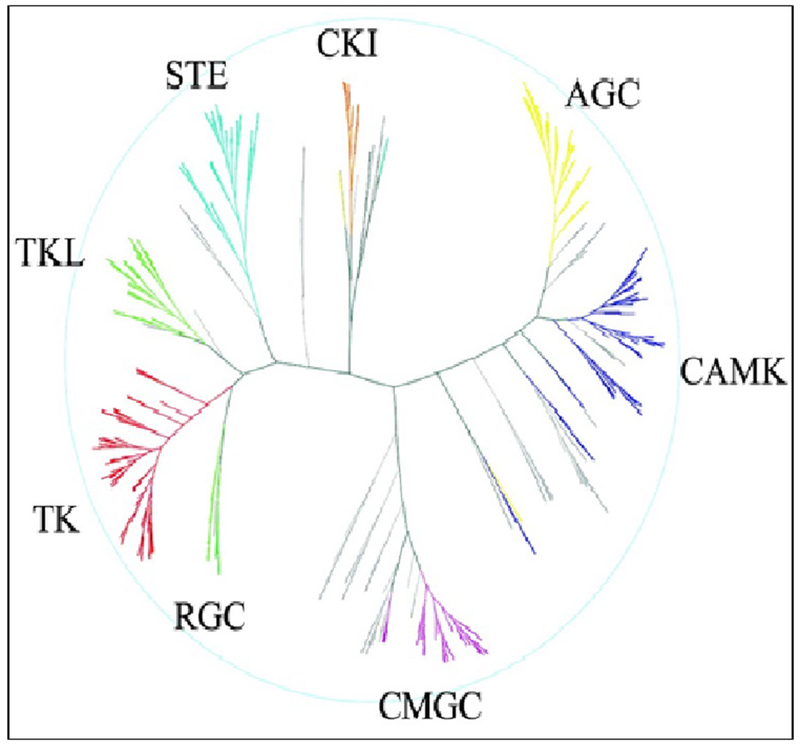Figure 1:
The ‘Human Kinome’ as adapted from ‘ The Protein Kinase Complement of the Human Genome’ [2]. Human kinome represented as a phylogenetic tree listed in the scientific database. In addition to the eight protein kinase groups depicted in the main dendrogram, lipid, atypical and clinically-relevant mutant kinases are also annotated to the human kinome. The classic kinase dendrogram includes the following eight kinase groups: TK - Tyrosine kinase; TKL - Tyrosine kinase-like; STE - Homologs of yeast Sterile 7, Sterile 11, Sterile kinases; CK1 - Casein kinase 1; AGC - Containing PKA, PKG, PKC families; CAMK - Calcium/calmodulin-dependent protein kinase; CMGC - Containing CDK, MAPK, GSK3, CLK families; OTHER - Divergent kinases not represented in other groups.

